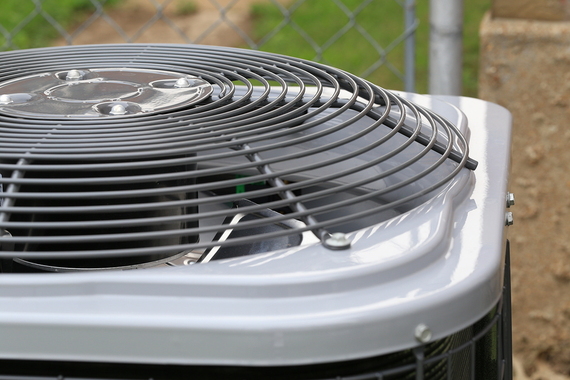
Chlorodifluoromethane, commonly known as R-22, is a chemical compound used for refrigeration purposes. Although numerous home cooling systems contain this gaseous substance, R-22 reliance is currently being phased out in the United States due to its hazardous environmental impact. Therefore, it's important to note if your HVAC unit might exacerbate the issue.
What's Wrong with R-22?
When released in bulk quantities, this chemical causes ozone depletion and significantly increases the risks of global climate change. In fact, R-22 emission -- among other hydrofluorocarbon compounds (HFC) -- can reach 10,000 times more potency than carbon dioxide, per ounce.
To counteract these ozone effects, the Montreal Protocol -- an international treaty that promotes disuse of harmful substances -- will mandate reduced "consumption of HFCs by 99.5 percent below the U.S. baseline" by 2020. Recycled or reclaimed refrigerants will be permitted, but after the deadline, chemical manufacturers cannot produce R-22 for air conditioner maintenance.
Are there Any Alternatives?
In response to this phase-out, corporations and government agencies are developing more eco-friendly coolants. Since 2010, the Obama Administration has partnered with companies to avoid R-22 environmental leakage from houses, cars or offices. These voluntary participants represent a chemical manufacturing coalition that comprises 95 percent of U.S. HFC production.
The current leading R-22 alternative in residential HVAC equipment is called R-410A, and this refrigerant provides effective home ventilation without emitting greenhouse gases.
Why Make the Switch-Over?
As the government decreases R-22 production over these next several years, homeowners who still utilize this chemical coolant will experience a dramatic upsurge in A/C servicing costs. Moreover, since these outmoded units were taken off the market in 2010, basic R-22 maintenance parts have become increasingly scarce -- for both commercial and residential purposes.
Conversely, installing an R-410A air-conditioner offers numerous benefits to both consumers and the atmosphere they breathe. This refrigerant does not cause ozone depletion, and HVAC machinery that operates on R-410A earns a higher Seasonal Energy Efficiency Ratio (SEER) rating than its noxious counterpart.
So, if your A/C unit's nameplate or owner manual identifies it as "R-22," consider upgrading to the safer and more efficient "R-410A" model.
Does your household contribute to environmental protection? Could your ventilation system potentially be wasting energy and releasing harmful fumes into the atmosphere? Feel free to share your contributions to the environment in the comments below.
This post originally appeared on the Artic Air blog. Reprinted with permission.


